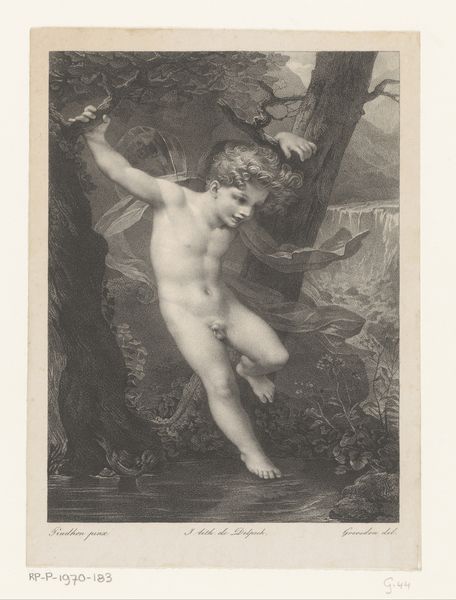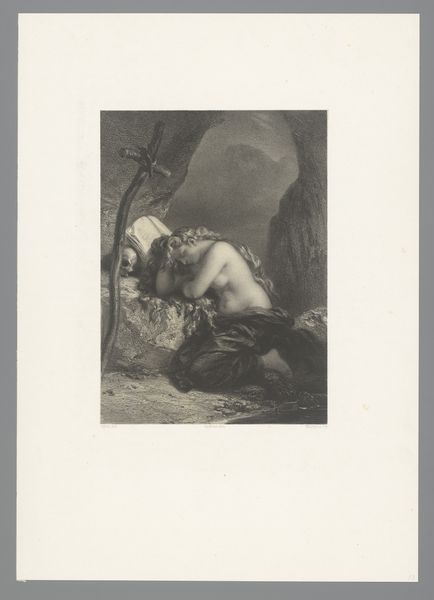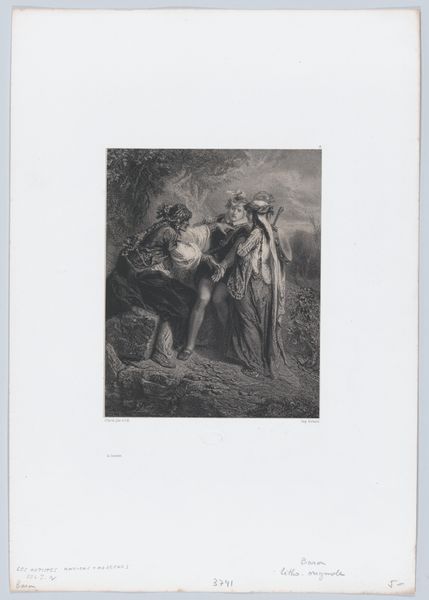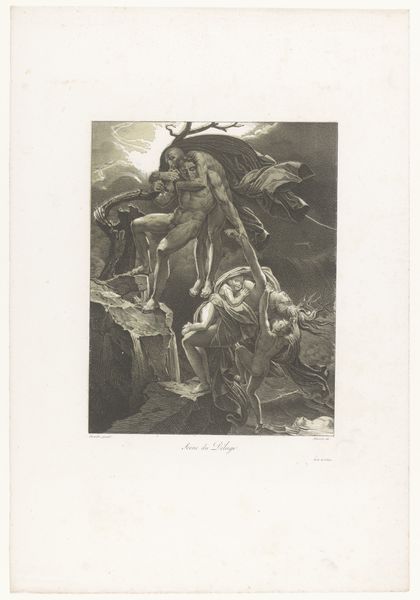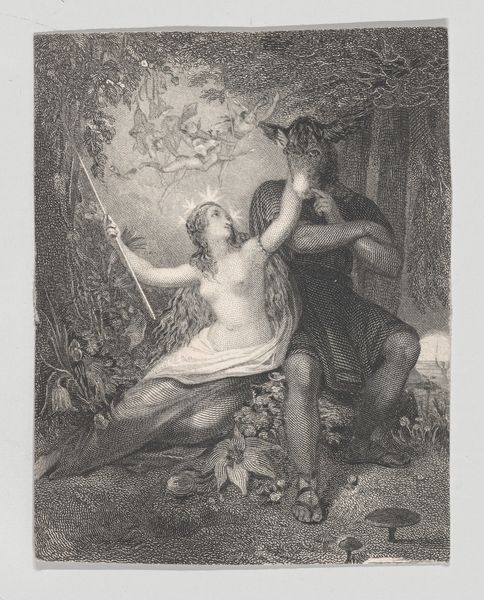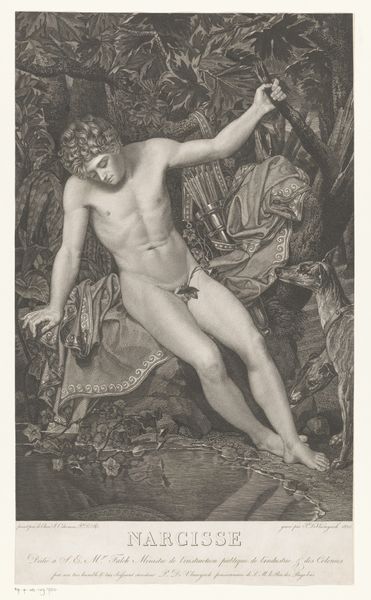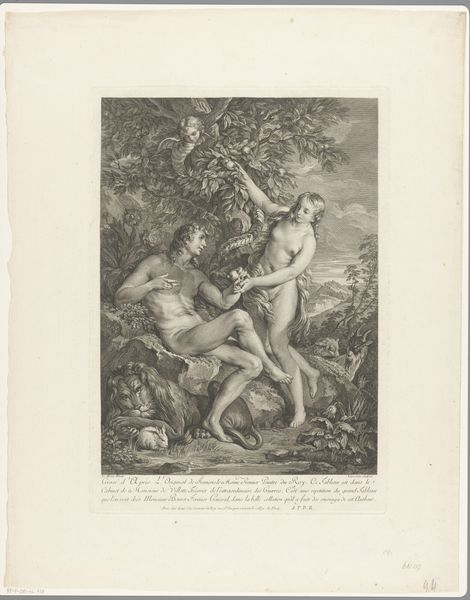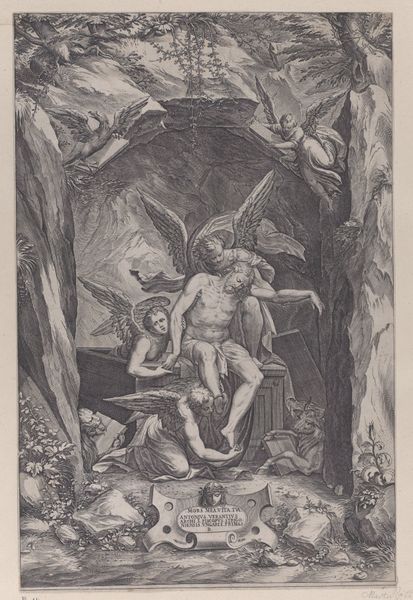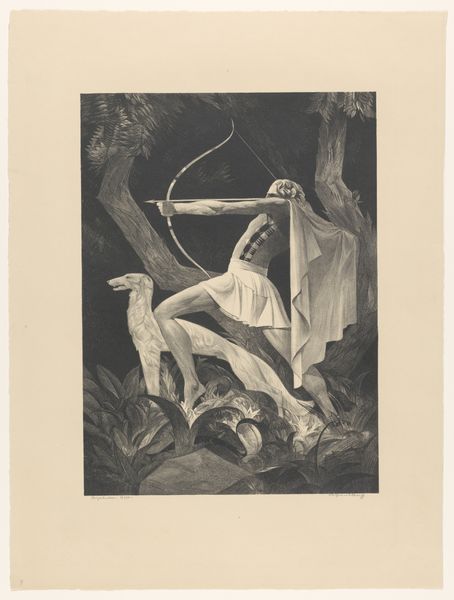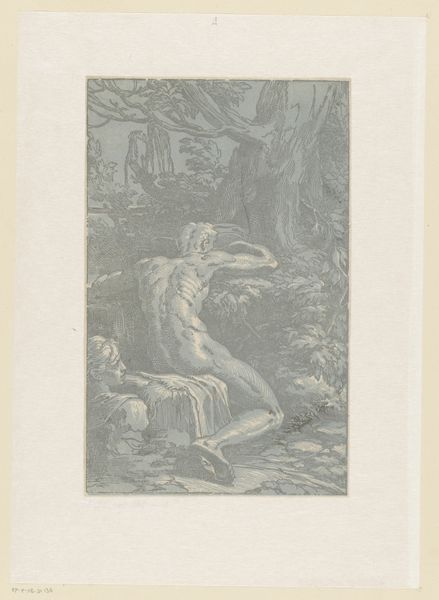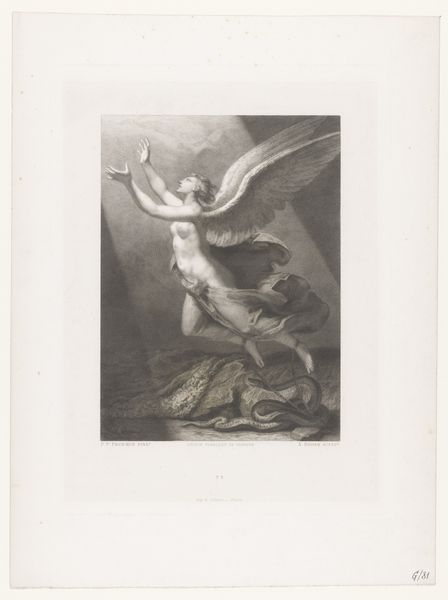
print, engraving
#
allegory
# print
#
figuration
#
romanticism
#
history-painting
#
nude
#
engraving
Dimensions: height 155 mm, width 124 mm
Copyright: Rijks Museum: Open Domain
Curator: Alexandre Vincent Sixdeniers's "Zephyrus," from 1829, presents an intriguing figure. The Romantic style is clear, and the medium, engraving, feels significant. It evokes a dreamlike quality. What stands out to you? Editor: It's interesting how a seemingly straightforward allegorical nude can also bring out questions of the materials involved. Engraving seems like a time-consuming process. How does the materiality of the printmaking process shape the image we see here? Curator: The very act of engraving, meticulously carving lines into a metal plate, inherently dictates a level of control and labor. Consider the social context: engravings were a means of distributing imagery, making art accessible to a wider audience beyond the elite who could afford original paintings. Does that influence your view? Editor: It does make me consider accessibility and value. This piece feels inherently tied to the concept of reproduction, moving it away from being this unique "high art" object. The lines, made with intention but ultimately reproducible, challenge this. Was Sixdeniers consciously grappling with these ideas? Curator: It's a crucial question to ask! While we can't know Sixdeniers's explicit intentions, a materialist reading invites us to consider the economic and social functions of art. The choice of engraving facilitates wider circulation, transforming the artwork into a commodity. Do you notice the absence of color? Does it point to an interesting interpretation of social class? Editor: I see your point. Perhaps the black and white image served to depersonalize the art itself. So, examining the engraving as a manufactured object adds a critical dimension, taking it beyond pure artistic expression and getting closer to socio-economics of art. Curator: Precisely! By focusing on the materials and the means of production, we can start to uncover the complex relationships between art, labor, and consumption. Hopefully, the listeners also gleaned some understanding on this analysis as well! Editor: That’s a helpful perspective! I now understand the work in terms of process rather than simply aesthetic. Thank you!
Comments
No comments
Be the first to comment and join the conversation on the ultimate creative platform.
